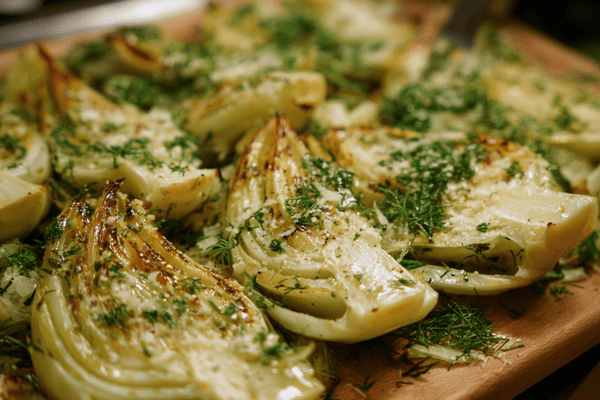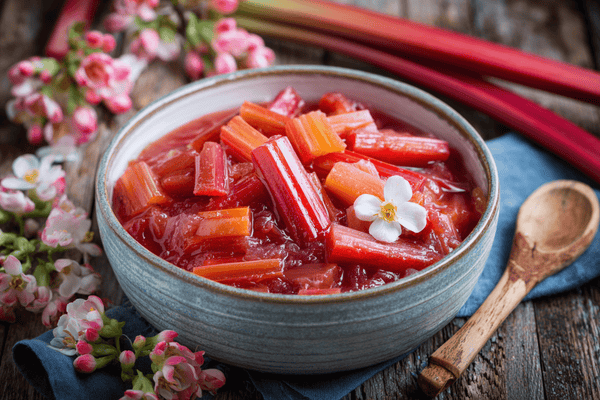
One of the fundamental skills in culinary arts is mastering various cutting techniques. The julienne cut is elegant and practical, opening up numerous possibilities for food preparation and presentation. This comprehensive guide will teach you how to julienne with precision and confidence, transforming your knife skills from basic to professional level.
What Is Julienne?
Julienne (pronounced "joo-lee-ENN") means cutting food into thin, uniform matchstick-shaped strips. In professional kitchens, a proper julienne has precise dimensions:
- Width: 1/16 to ⅛ inch (1.5-3mm)
- Height: 1/16 to ⅛ inch (1.5-3mm)
- Length: 2-3 inches (5-7.5cm)
This cutting technique originated in French cuisine, where it's sometimes called "allumette" (meaning matchstick). The uniform size ensures even cooking and creates an elegant presentation in finished dishes.
Why Julienne?
- Ensures even, quick cooking due to consistent size
- Creates an appealing texture and mouthfeel
- Enhances visual presentation of dishes
- Allows for better integration of ingredients in salads and stir-fries
- Increases surface area for maximizing flavor absorption in marinades
Safety First
Before beginning any cutting technique, proper safety practices are essential:
Proper Hand Position
- Use the "claw grip" technique: curl your fingertips under your knuckles on the food-holding hand.
- Keep knuckles perpendicular to the cutting board to serve as a guide for the knife.
- This position protects your fingertips from accidental cuts
- Learn more about how Japanese chefs hold their knives
Knife Safety
- Always use a sharp knife—dull knives require more force and are more likely to slip.
- Cut away from your body with controlled, deliberate motions
- Keep your cutting board stable (place a damp towel underneath if needed)
- Focus entirely on the cutting task—avoid distractions
- Review our knife and basic kitchen safety rules, and how to prevent knife cuts in the kitchen
Emergency Preparation
- Keep a first aid kit accessible in your kitchen
- Know basic wound care for minor cuts
Tools for Julienning
Recommended Knives
- Chef's knife (8-inch): Ideal for most vegetables and larger cutting tasks
- Santoku knife: Excellent for precise cuts with less food sticking to the blade
- Utility knife: Better for smaller items or more delicate work
- Nakiri knife: Particularly excellent for vegetable preparation
Professional tip: The knife should feel comfortable in your hand and be well-balanced. Quality matters more than price—a well-maintained, mid-range knife is better than an expensive dull one. Not sure which knife is right for you? Check our guide to choosing the right chef's knife.
Cutting Surface
- Use a wooden or composite cutting board at least 12×18 inches (30×45cm)
- Wooden boards are gentle on knife edges and provide stability
- Avoid glass or marble cutting boards as they will quickly dull your knives
- For more information, see our guide to chopping boards and learn about the benefits of wooden cutting boards
Optional Tools
- Mandoline slicer with julienne attachment: For high-volume preparation
- Julienne peeler: For quick, small julienne tasks
- Ruler or measuring tape: Useful for beginners to verify dimensions
The Traditional Julienne Method
Preparation
- Clean your vegetables thoroughly
- Peel if necessary (optional for many vegetables)
- Trim the ends to create flat surfaces
Step-by-Step Technique for Firm Vegetables
Using a carrot as an example:
Step 1: Create a stable base
- Cut the carrot lengthwise to create a flat side
- Place this flat side down on your cutting board

Step 2: Form a rectangular shape
- With the flat side down, trim the rounded sides
- Make 3-4 cuts to form a rectangular prism (beam-shaped)
- When viewed from the end, it should look like a rectangle

Step 3: Cut into manageable segments
- Cut this rectangular prism into 2-3 inch (5-7.5cm) segments
- This makes the carrot easier to handle for the next steps
Step 4: Slice into thin planes
- Cut each segment lengthwise into thin, even slices
- Aim for 1/16 to ⅛ inch (1.5-3mm) thickness
- These slices should resemble thin cards or dominoes

Step 5: Make the final julienne cuts
- Stack 3-4 of the thin slices at a time
- Cut across them to create uniform matchstick-sized pieces
- These are your julienne cuts!

Professional tip: Apply consistent pressure throughout cutting for uniform thickness. Let the knife's weight do much of the work rather than forcing it through.
Visual Reference Guide
Imagine you're transforming the vegetable through these shapes:
- First into a rectangular log (steps 1-2)
- Then into thin cards, like from a deck of playing cards (step 4)
- Finally into matchsticks (step 5)
Julienning Different Foods
Root Vegetables (Carrots, Parsnips, etc.)
Follow the traditional method above. Their firmness makes them ideal for practicing precision.
Softer Vegetables (Zucchini, Cucumber)
- Trim ends and cut into 2-3 inch segments
- Slice lengthwise into thin planks (remove seedy center if desired)
- Stack planks and cut into julienne strips
- Use less pressure than with firm vegetables to avoid crushing
Bell Peppers
- Cut off the top and bottom
- Make one vertical slice and open the pepper to lay it flat
- Remove the white membrane and seeds
- With skin side down, cut into 2-3 inch sections if necessary
- Slice into thin strips, maintaining consistent width
Onions
- Cut the onion in half from root to tip
- Peel the halves
- Place cut-side down, then slice from tip to root (not across) at 1/16 to ⅛ inch intervals
- Be careful not to cut through the root end to keep strips attached
- Make one horizontal cut to release the julienned pieces
Leafy Greens (Advanced)
- Stack several leaves on top of each other
- Roll them tightly into a cigar shape
- Using a very sharp knife, slice across the roll to create thin strips
- This technique is called "chiffonade" but produces julienne-like strips
Refer to our guide on traditional Japanese cutting techniques for morespecialised cutting techniques.
Quick Julienne Method
When time is limited but precision still matters:
- Cut your vegetables into thin diagonal slices (1/16 to ⅛ inch thick)
- Stack several slices together
- Cut across the stack to create julienne strips
- Adjust your initial angle to achieve the desired length
Professional tip: This method works exceptionally well for longer vegetables like zucchini, cucumber, and daikon radish. There will be less waste and more consistent results than with the traditional method for these particular foods.
Common Mistakes and Troubleshooting
Problem: Inconsistent Sizes
Cause: Uneven pressure or changing knife angle Solution: Slow down and focus on making each cut with identical pressure and angle. Mark your cutting board with guide lines using tape for practice.
Problem: Crushing Instead of Cutting
Cause: Dull knife or too much pressure. Solution: Sharpen your knife and let the blade do the work with a sliding motion rather than pushing down. Remember that proper knife maintenance is essential for precise cutting.
Problem: Pieces Are Too Short
Cause: Cutting vegetables across their shortest dimension. Solution: Always identify the longest dimension of your vegetable and cut parallel to it.
Problem: Difficult to Keep Fingers Safe
Cause: Improper hand positioning or unstable cutting surface. Solution: Practice the claw grip technique with slower, deliberate cuts until it becomes natural. Ensure your cutting board doesn't slide.
Problem: Julienne Strips Stick Together
Cause: Not enough liquid in the vegetable or a dull knife. Solution: Rinse the knife with cold water between cuts or lightly oil the blade for starchy vegetables.
For more information on common knife mistakes, check out our article on errors that could be damaging your knives.
Culinary Applications for Julienned Vegetables
Raw Applications
- Salads: Create refreshing slaws and salads with julienned carrots, beets, and apples
- Garnishes: Add color and texture to plates with vibrant julienned vegetables
- Appetizers: Use as crudités with dips or wrap in rice paper for fresh spring rolls
Try our Red Cabbage Salad or Broccoli Cauliflower Salad recipes, which benefit from julienned vegetables.
Cooked Applications
- Stir-fries: Julienned vegetables cook quickly and evenly in high-heat wok cooking
- Soups: Add as a garnish to clear soups like consommé or pho for texture and visual appeal
- Sautés: Create quick-cooking side dishes with minimal oil
For inspiration, check out our Sizzling Beef Stir Fry with Crisp Vegetables recipe, which showcases perfectly julienned vegetables.
Specific Recipe Ideas
- Vietnamese Banh Mi: Pickle julienned carrots and daikon in rice vinegar, sugar, and salt
- Classic French Potage Julienne: Clear soup with julienned vegetables
- Colorful Slaw: Combine julienned red cabbage, carrots, and apples with a light vinaigrette
- Stir-Fried Vegetables: Julienned carrots, bell peppers, and snow peas for quick, even cooking
- Potato Julienne: Crispy matchstick potatoes as a sophisticated side dish
Storing Julienned Vegetables
To maintain crispness and prevent oxidation:
- Short-term storage (1-2 days): Place in cold water in the refrigerator, changing water daily
- Medium-term storage (2-3 days): Wrap in slightly damp paper towels, then in an airtight container
- Preventing discoloration: Toss apple, potato, or other oxidation-prone vegetables with a bit of lemon juice
Skill Development Progression
Beginner Level (1-2 weeks practice)
- Focus on: Safety and basic technique
- Practice with: Carrots, potatoes, cucumbers
- Goals: Consistent sizing, proper hand position
- Exercise: Cut 1-2 carrots into julienne strips daily, measuring occasionally to check dimensions
Intermediate Level (2-4 weeks practice)
- Focus on: Speed and consistency
- Practice with: Bell peppers, zucchini, firm fruits
- Goals: Maintain quality while increasing speed
- Exercise: Practice the quick julienne method, comparing results with the traditional method
Advanced Level (1-2 months practice)
- Focus on: Difficult vegetables and efficiency
- Practice with: Onions, leafy greens, irregular shapes
- Goals: Professional speed with consistent quality
- Exercise: Time yourself julienning different vegetables, aiming to reduce time while maintaining quality
Connection to Other Culinary Techniques
Mastering julienne cutting provides the foundation for other professional techniques:
- Brunoise: Tiny dice created by cutting julienne strips into cubes (1/8 inch cubes)
- Batonnet: Thicker version of julienne (1/4 inch × 1/4 inch × 2-3 inches)
- Chiffonade: Technique for ribbon-cutting leafy herbs and greens
- Paysanne: Thin, flat square or round cuts often used in country-style recipes
For more advanced cutting techniques, explore our comprehensive guides:
Final Thoughts
The julienne technique represents one of the true joys of cooking—transforming ingredients in form and function. With practice, your julienne cuts will become more consistent, your speed will increase, and your confidence will grow. This precision cutting method enhances not only the presentation of your dishes but also their texture and cooking qualities.
Remember that mastering any culinary technique takes practice. Don't be discouraged by initial struggles—even professional chefs once began as beginners. The key is consistent practice and attention to detail. Soon, you'll be julienning with the precision and confidence of a professional chef!
To further enhance your culinary skills, explore these related resources:
- What Knife is Best for Cutting Vegetables
- Santoku vs. Nakiri: Which is Best?
- Do I Need a Vegetable Knife and Meat Knife?
For specific cutting techniques for different vegetables, check out:
Did you find this guide helpful? What other culinary techniques would you like to learn? Share your julienne creations and let us know how this technique has elevated your cooking!


